Letters from Lodi
An insightful and objective look at viticulture and winemaking from the Lodi
Appellation and the growers and vintners behind these crafts. Told from the
perspective of multi-award winning wine journalist, Randy Caparoso.
Our favorite Lodi wine country photos of 2022
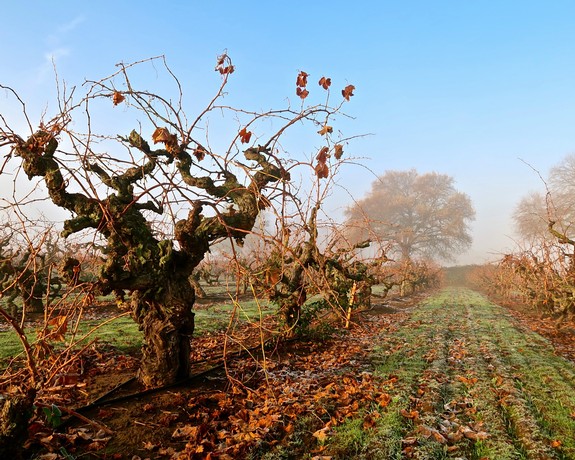
Craggy ancient, elongated vines, determined to survive: This past week, Royal Tee Vineyard—Lodi's oldest Zinfandel block (planted in 1889)—in the morning as the December fog begins to lift.
Choosing favorite photographs out of thousands taken every year is never easy. So I simply threw objectivity out the window and zoomed in on the photos that either popped out like "eye candy," and which seem to "say" the most—the most about Lodi, about its people and history, or about the state of Lodi wines or winegrowing in general.
Here's hoping you enjoy the following images as much as I do, and wishing you a very Merry Christmas from Lodi wine country!
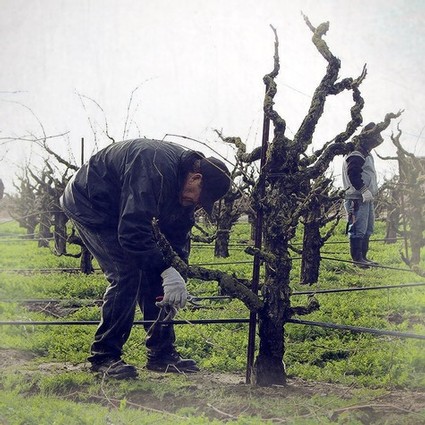
In January of 2022, winter pruning of Lodi's thousands of vines, far more than any other wine region in the U.S., each and every plant demanding human touch, exacting skill, stamina, and attention.
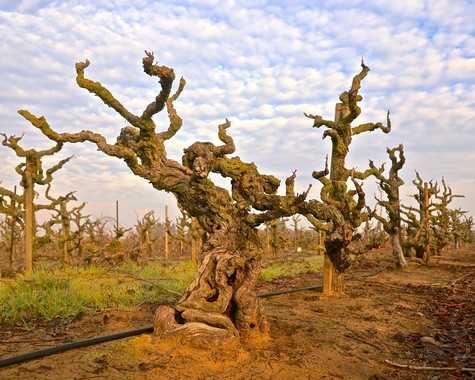
During a bright, chilly yet cheerful morning in February, the ancient vine Mokelumne River-Lodi Zinfandel, planted over 50 to over 100 years ago, looks as healthy and robust as ever.
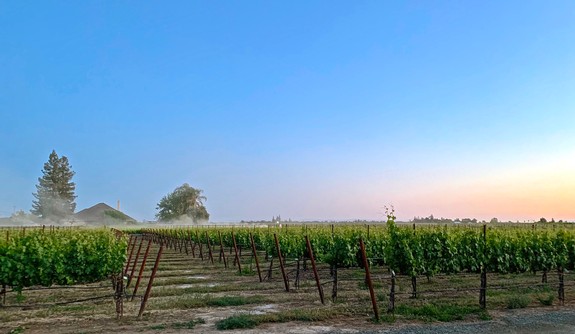
During a fiery mid-spring dusk, a tractor leaves a trail of sulfur dust in the Acquiesce estate on the east side of Lodi's Mokelumne River AVA.
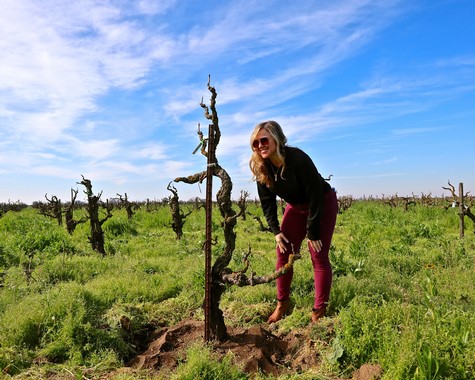
Oh, the wonder of visiting journalists when they are first introduced to Lodi's ancient vines; in this case, San Francisco's Alyssa Fitzgerald, communing with 136-year-old Cinsaut in the historic Bechthold Vineyard.
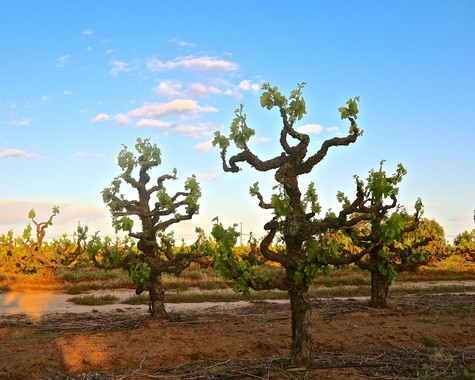
These free-standing Zinfandel vines are planted in the tall (5 to 6 feet) vertical cordon style popular in the 1970s and '80s; the long, winding spurs are indicative of the age of these highly productive vines.
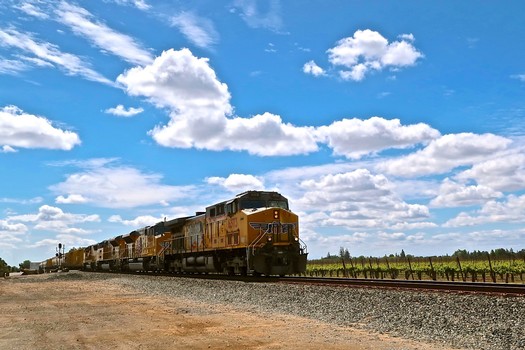
You see a train running through a vineyard just north of the City of Lodi on a fine spring day. I see a long, grand history: these railroad tracks, originally laid down by Central Pacific Railroad in 1869, were what connected Lodi to the rest of the world, bringing people and economic prosperity to this farming community, driven mostly by the grape-growing industry.
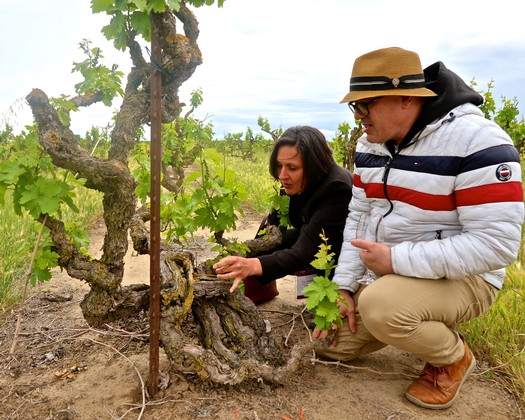
In the spring of 2022, Lodi's growers hosted sommeliers (i.e., restaurant wine professionals) from all across the country, allowing them to experience Lodi's winegrowing history through up-close-and-personal encounters with ancient vines such as this vigorous own-rooted Zinfandel, first planted by the Mettler family back in 1901.
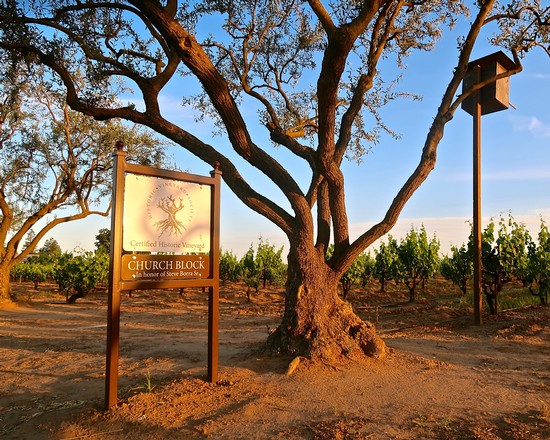
Many of Lodi's vineyards, such as Church Block (originally planted in the 1930s) just south of the city, are now officially certified by the Historic Vineyard Society, a California-based organization that endeavors to protect venerated plantings for future generations.
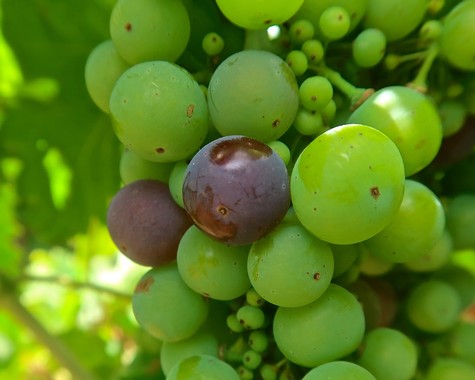
In early July, right on time, the first sign of veraison (the annual turning of color in red wine grapes) in an ancient vine Zinfandel block on the east side of Lodi's Mokelumne River appellation.
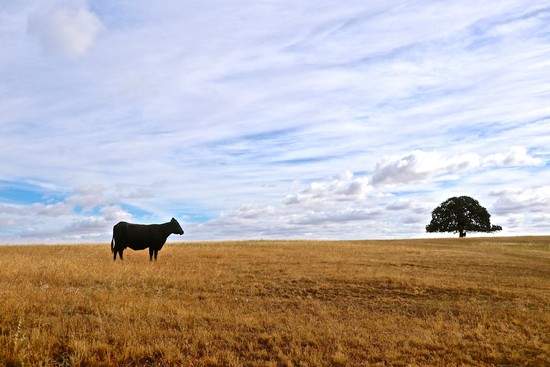
A cow on a sloped hillside near a majestic, +100-year-old blue oak in Lodi's Clements Hills AVA; signifying the region's fourth largest industry (dairy ranching, ranked after walnuts, almonds, and grapes in annual revenue)
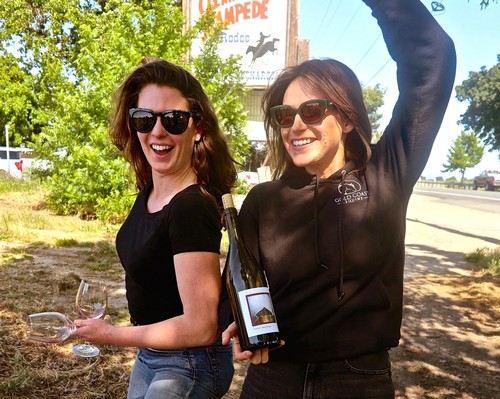
Blowing in like a wild wind, the owner/winemakers of Little Trouble Wine Co,—Jennifer Reichardt and Sara Morgenstern—have been bringing energy and irrepressible enthusiasm to the Lodi winegrowing industry with their innovative styles of wine sourced from vineyards such as Stampede in the little community of Clements.
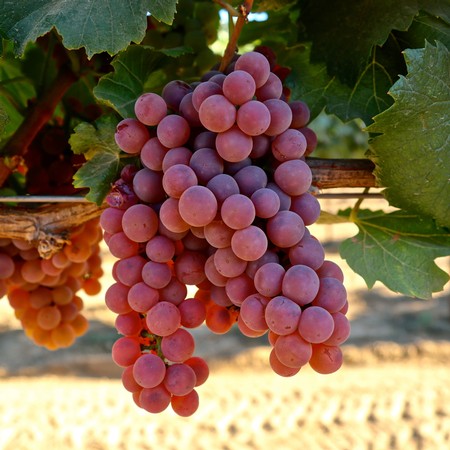
Just added to the over 130 different wine grapes commercially grown in Lodi: Chardonnay rosa ( a pink-skinned variant of this popular cultivar), boldly planted and sustainably grown by LangeTwins Family, who have been farming in the region since the 1870s.
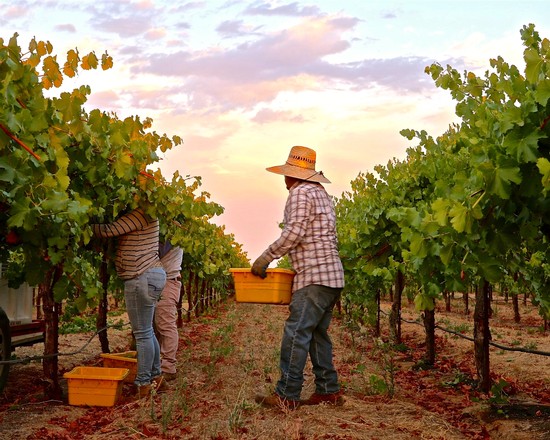
During the earliest phase of Lodi's 2022 harvest, Acquiesce picks its Viognier, a variety for which the winery estate was proclaimed the Sweepstakes winner (i.e., the single best white wine out of thousands of other white wines entered) at the San Francisco Chronicle Wine Competition in January 2022.
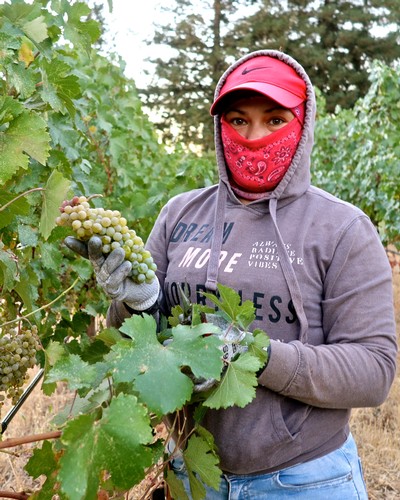
On a miniscule, handcraft scale, Lodi's Mokelumne Glen Vineyards cultivates Grüner Veltliner, a relatively rare (at least in California) grape of Austrian origin producing a light, tart, steely dry yet fragrant style of white wine appealing to more and more consumers by the day.
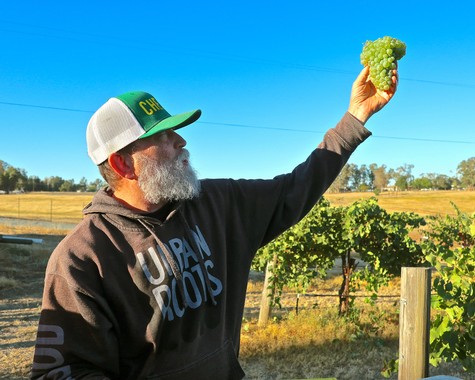
Iconoclastic "natural" style winemaker Craig Haarmeyer of Sacramento's Haarmeyer Cellars pays tribute to one of his all-time favorite grapes, Chenin blanc grown in Palmero Family Vineyard, Lodi's Borden Ranch AVA.
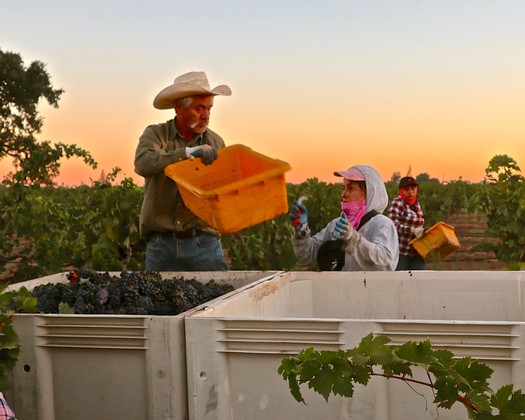
More and more contemporary style vintners are producing a much lighter, floral style of red Zinfandel from grapes picked as early as the beginning of August, such as this early morning harvest in Cherryhouse Vineyard on the west side of Lodi's Mokelumne River AVA.
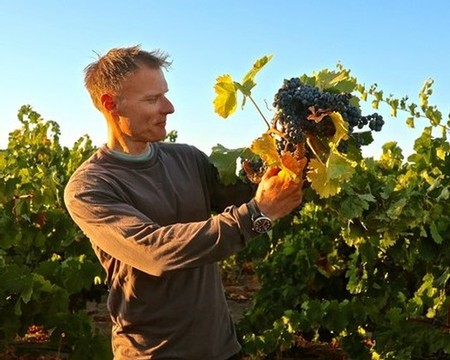
Lodi's Markus Niggli (Markus Wine Co.) is not only one of the region's most contemplative winemakers, he is also an exacting vineyard manager who has been reviving long overlooked (some would say "neglected") vineyards such as Nicolini Ranch (in this photo), planted to Carignan, a grape making a comeback among connoisseurs of old vine wines.
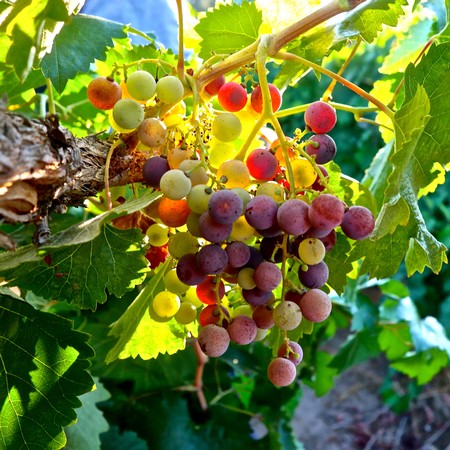
Another grape making a dramatic comeback in regions such as Lodi: Mission, a historic cultivar that was once the only grape planted in California (up until the 1850s), but shunned by the California industry for over 150 years for its propensity to produce light red wines very low in color. The reason for its recent popularity: more and more consumers looking for lighter styles of red wine, even if low in color. In this photo, colorful Mission grapes growing on a 133-year-old, own-rooted vine on the west side of Lodi's Mokelumne River area.
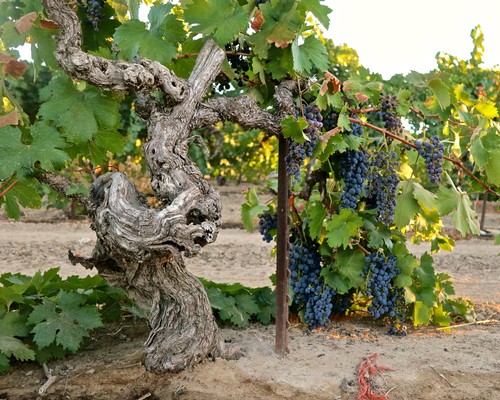
On a late August harvest morning, Zinfandel from the Schmiedt family's 1902 block just before going into the bins of a Napa-based winery producing a soft, light yet zesty "nouveau" style of red from this historic grape.
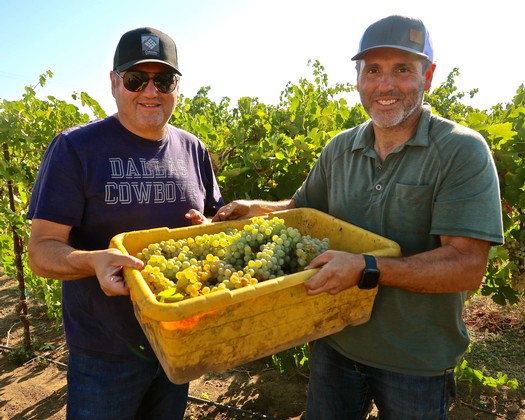
2022 was a big deal for John and Jeff Perlegos, second-generation Lodi farmers of Greek descent, proudly showing off the bounties of their second-ever harvest of Assyrtiko, a Greek grape that appears to be tailor-made for Lodi's sun-soaked Mediterranean climate.
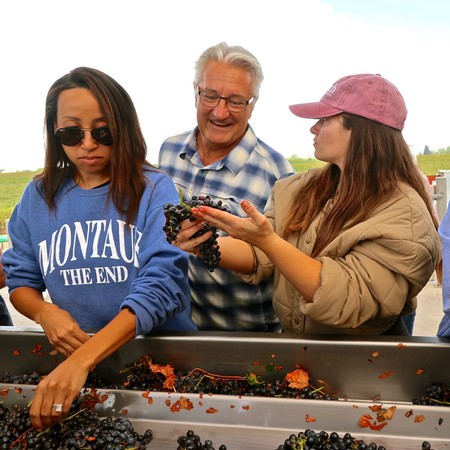
This past September a contingent of wine influencers—social media mavens, each in direct communication with thousands upon thousands of wine lovers—descended upon Lodi wine country for three days of vineyard tastings, grape picking, and even spending quality time at grape sorting and fermentation bins, such as in this photo taken at Bokisch Vineyards (guided by owner/grower Markus Bokisch).
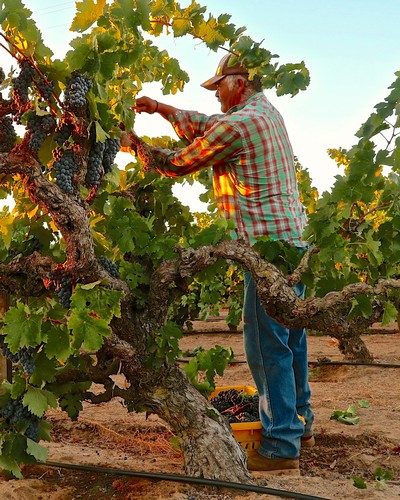
Absolutely nothing in the world like the sight of hand picking of Zinfandel so old (in this photo, Jessie's Grove's Royal Tee Vineyard, planted in 1889) that their arms are much longer than their trunks, which are massive enough.
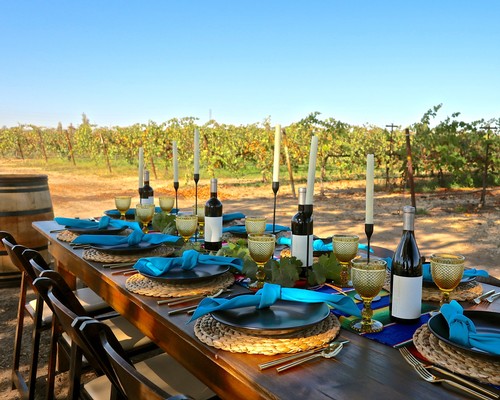
This table was set by the Anaya family, Mexican-American grower/vintners, in their Potrero Vineyard, planted to Cabernet Sauvignon, Tempranillo and Nebbiolo in Lodi's Clements Hills AVA—varietals matched with authentic Mexican cuisine for the benefit of visiting wine professionals from across the country.
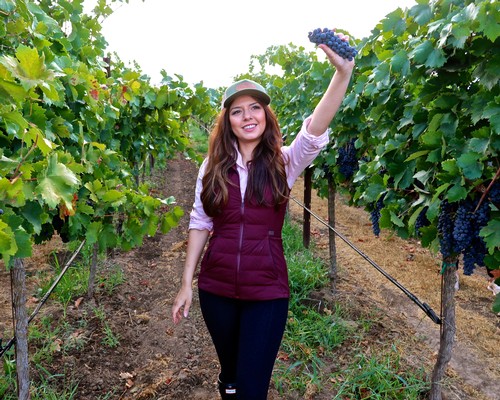
Visting wine influencer (@christyonthevine) trying her hand at hand-harvesting of Syrah in Abba Vineyard, on the east side of Lodi's Mokelumne River AVA.
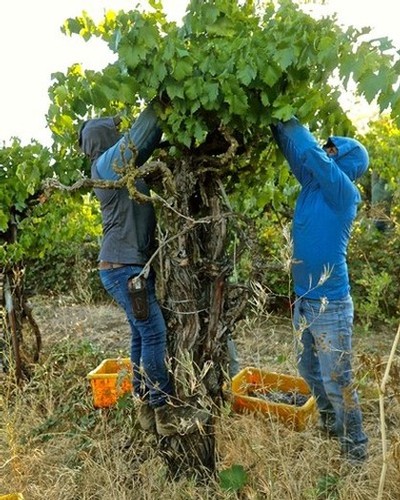
In much more rigorous fashion, these +6-feet tall Mission vines in Lodi's Somers Vineyard require literal climbing atop the tree-like trunks to get at this old vine fruit.
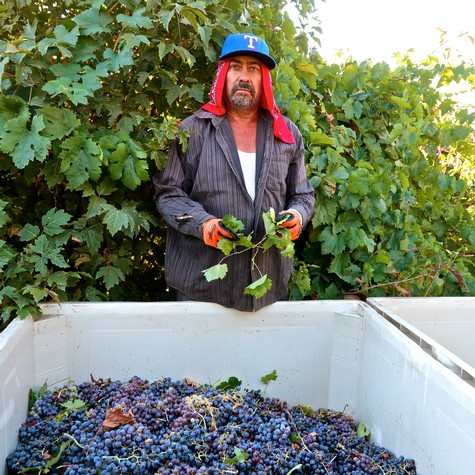
Field sorting (removal of leaves and any material other than grapes) is long, tedious, laborious work, as with this macro bin filled with Mission grapes in Somers Vineyard, on the east side of Lodi's Mokelumne River AVA.
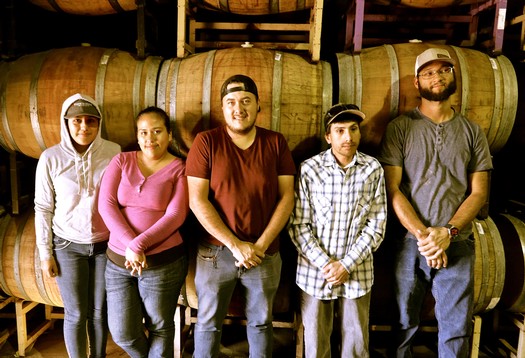
Part of the cellar team at Klinker Brick Winery, right after finishing their stretching exercises at the start of their morning shift during the harvest madness.
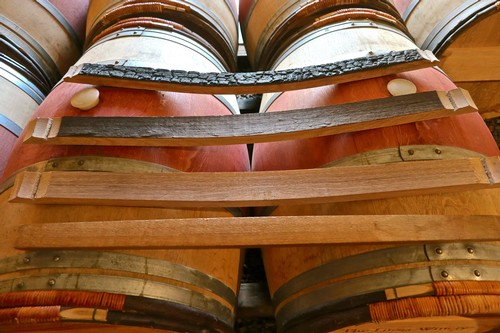
A display of oak staves showing different shades of "toasting" (wine barrels are shaped over open fires, a process that allows varying levels of charring, which impacts wine flavor) at The Lucas Winery, which holds the distinction of being the Lodi wine region's first (back in 1978) small handcraft winery where Zinfandel was produced from a single vineyard and aged in French oak barrels.
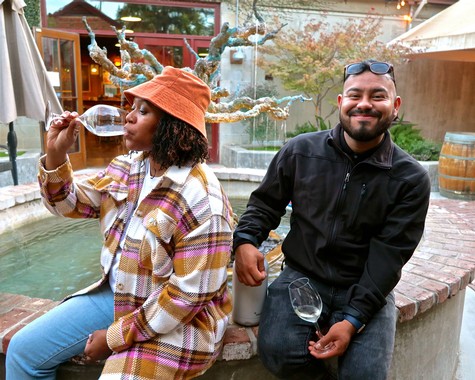
Visiting wine professionals at Klinker Brick Winery with two different poses: one quite serious, the other quite jovial—the exact two sides of wine appreciation, stimulating both the intellect and senses.
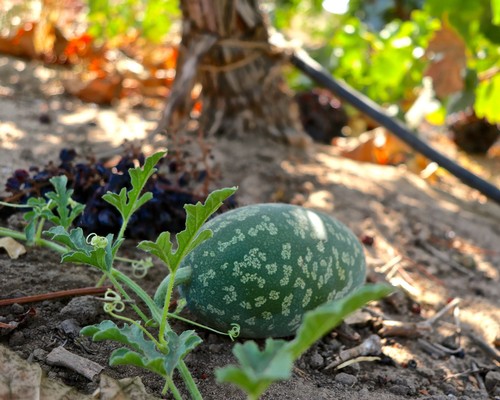
In an old vine block, "wild" watermelons, were originally seeded way back in the 1880s, when Lodi was known as the "Watermelon Capital of the Country."
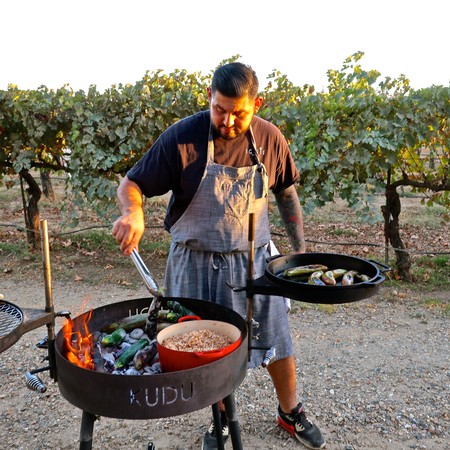
Chef Daniel Cortez, the talented owner of Ignis Provisions, grills up a vegan-style harvest dinner in the vineyards of Lodi's PRIE Winery.
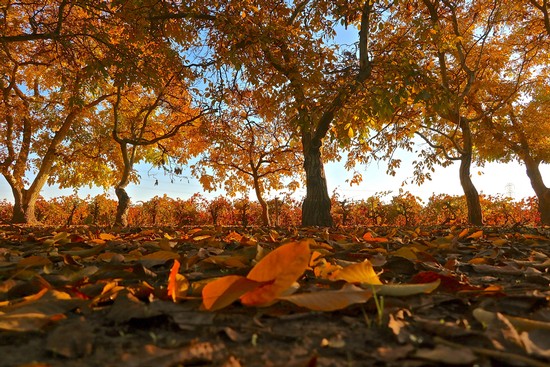
In Lodi's Clements Hills AVA, the golden brown colors fall in a walnut grove alongside old vine Zinfandel.
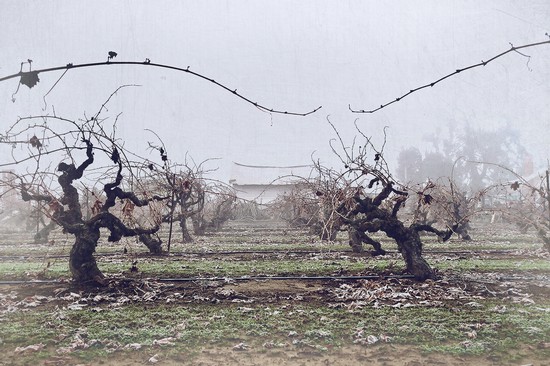
On a frosty December morning, the crooked shed and old vine Zinfandel in the Schmiedt family's 1902 block on Lodi's east side.
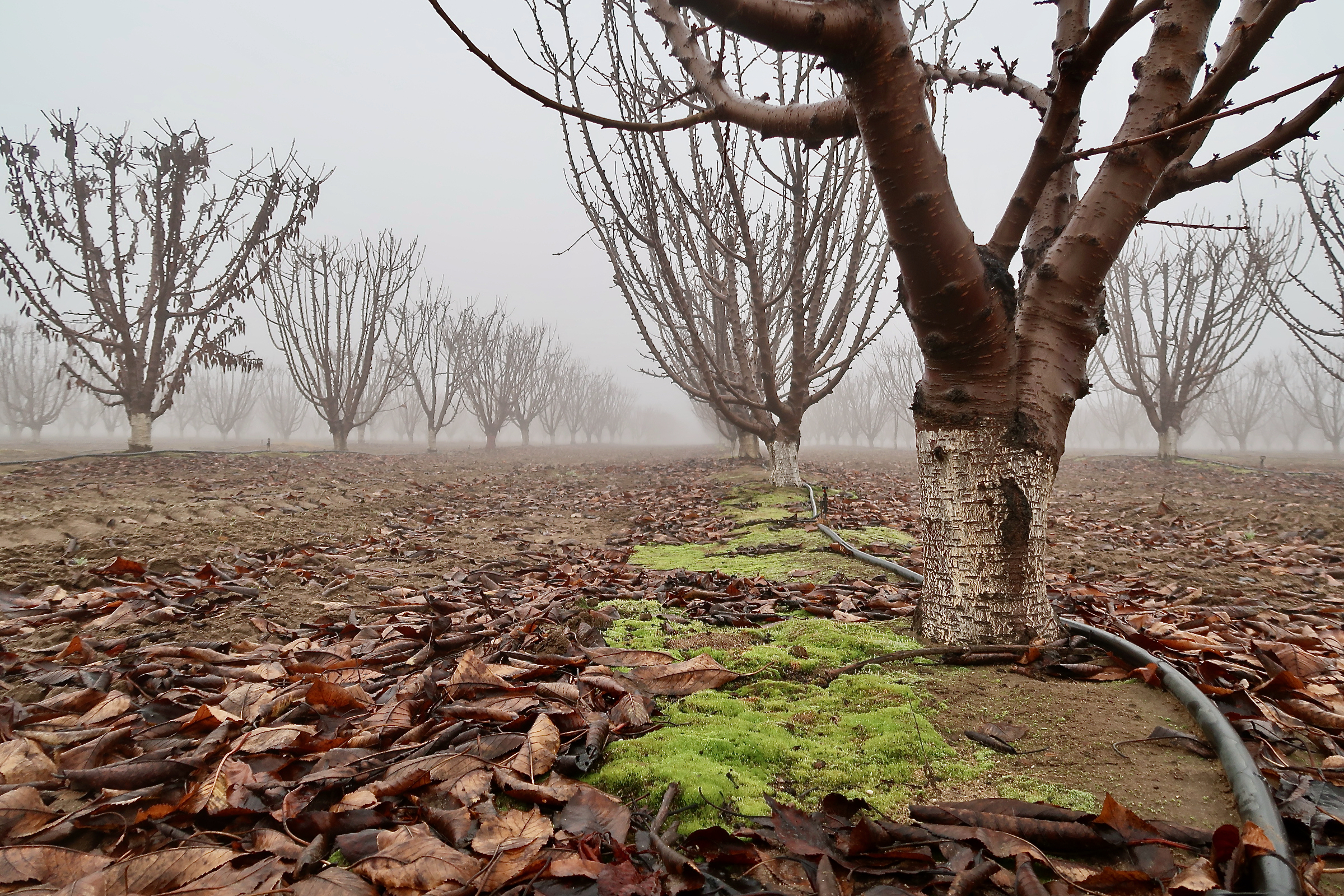
Wintry fog, moss, and knobby branches in mid-December in the Mettler family's Alpine Rd. cherry grove.
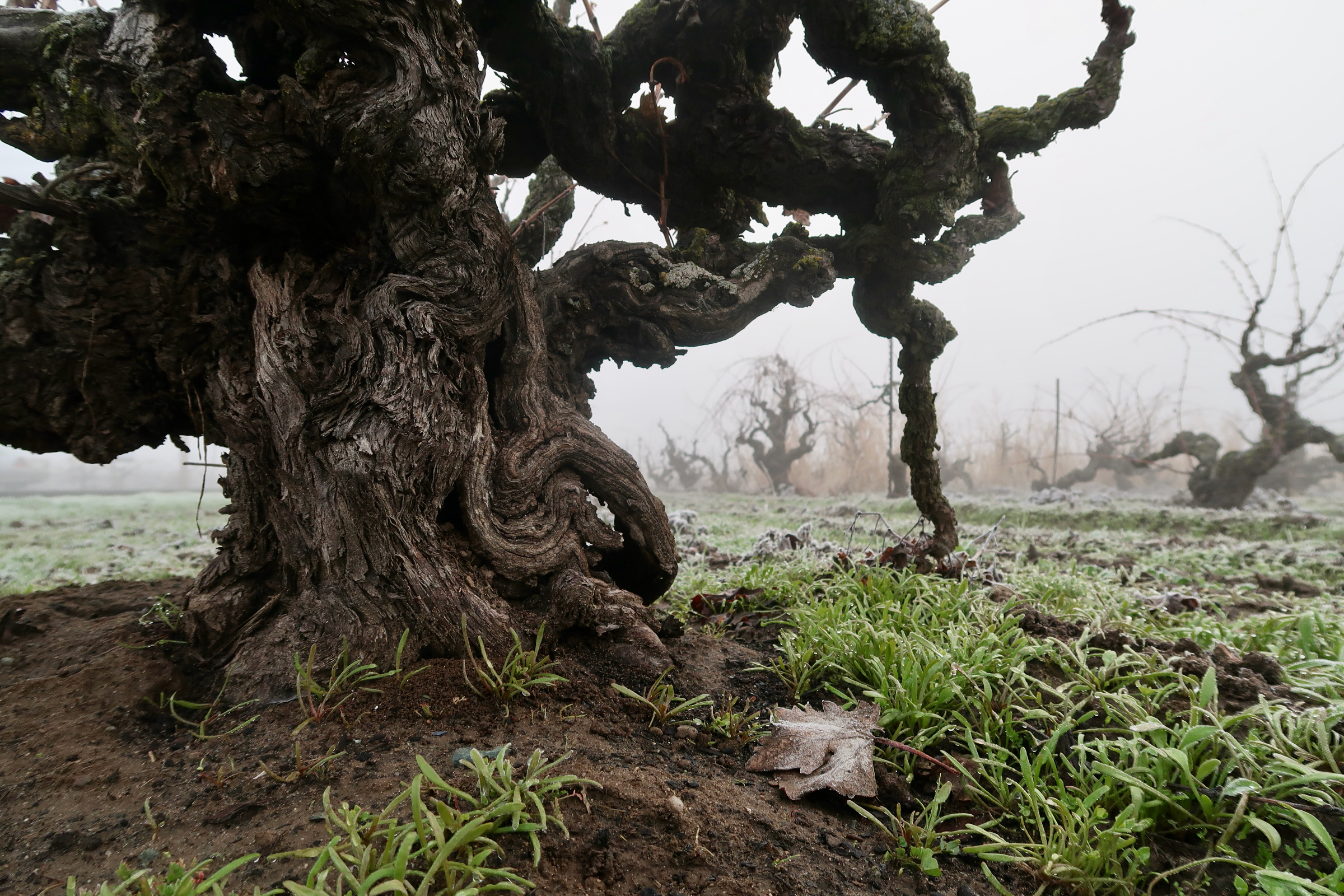
The majestic trunk of a 107-year-old, own-rooted Zinfandel during a frosty December morning on the east side of Lodi's Mokelumne River AVA.
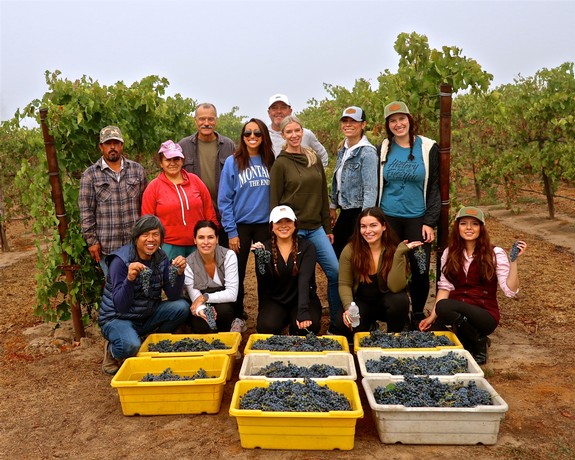
The author/photographer (left, kneeling) with Abba Vineyard Syrah harvest picked with visiting wine influencers, Abba Vineyard's Leo and Maria Herrera (left, standing), owner/grower Phil Abba (third from left, standing) and McCay Cellars owner/winemaker Mike McCay (middle, standing).